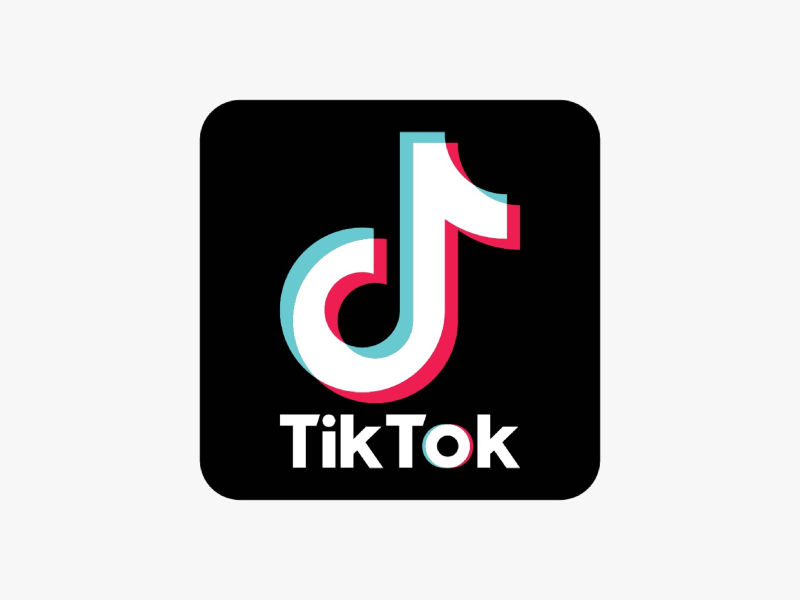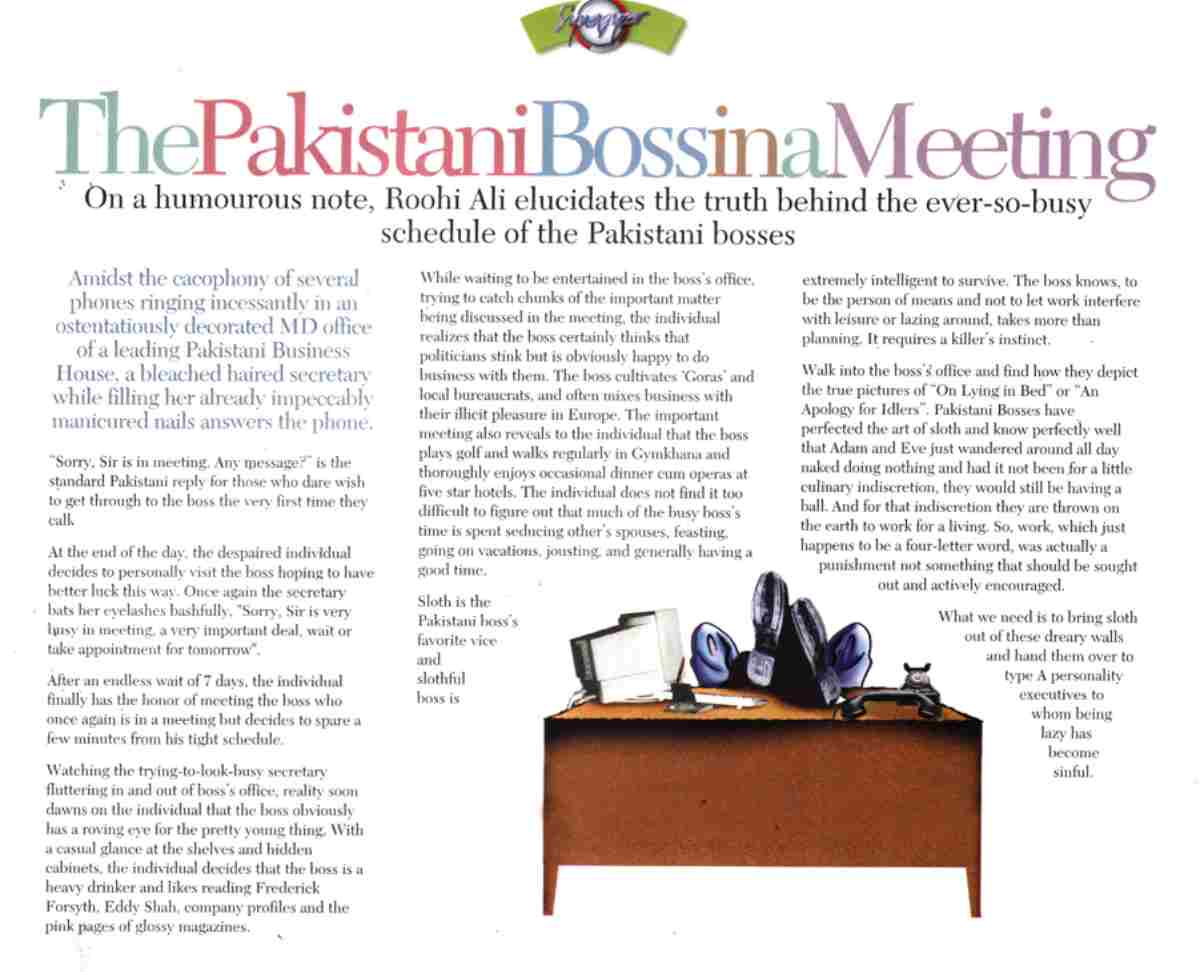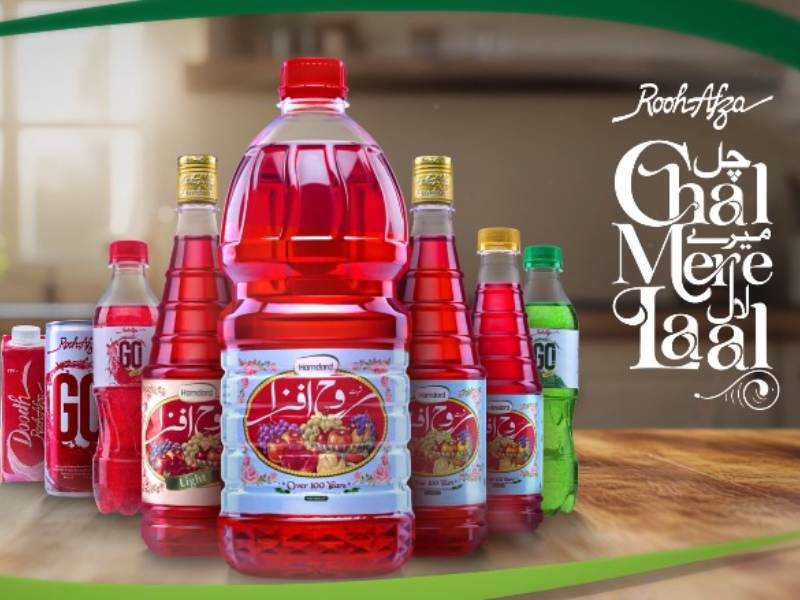Hay Day has launched a new ad featuring TV chef Gordon Ramsay.
Hay Day is a place of relaxation and calm, even for one of the most fiery individuals in entertainment.
Agency: Supercell
Production House: Stockholm office of Uncommon Creative Studio
Hay Day has launched a new ad featuring TV chef Gordon Ramsay.
Hay Day is a place of relaxation and calm, even for one of the most fiery individuals in entertainment.
Agency: Supercell
Production House: Stockholm office of Uncommon Creative Studio
Pakistan, February 4, 2025: To equip marketers with deep insights into TikTok’s community’s evolving wants and needs, the platform issued its annual trend forecast – What’s Next 2025 Trend Report. It shows that in 2025, the TikTok community will unite to create unique, transformative, and year-defining content, reshaping how the industry thinks about ‘marketing’ and the future of business growth—a movement called Brand Chem.
The old playbook of brands telling consumers what they need is over. This new era calls for brands to join forces with creators and communities, working hand-in-hand to build content that resonates, drives impact, and ultimately redefines cultural relevance.
“In 2024, we saw brands push creative limits, lean into trends, and connect with their communities in powerful ways, but 2025 is set to take it even further,” said Shadi Kandil, General Manager, Global Business Solutions, Middle East, Turkey, Africa, Central and South Asia – TikTok. “The creative storytelling opportunities on TikTok are endless, and this year brands and creators will come together to continue shaping culture, sparking fresh ideas, and accelerating business growth by tapping directly into what matters to the TikTok community.”
You can view the full ‘What’s Next’ report here.
This report focuses on the most impactful and sustainable trends, referred to as Trend Signals. The three key groups of Trend Signals:
A dynamic state where a brand gains renewed vigour, becoming more responsive and ready to build lasting bonds.
TikTok has become a go-to platform for trusted insights. Brands are discovering the value of collaborating with diverse creators, from low-key reviewers to dynamic personalities. Instead of relying on a single creator, brands can now connect with their community at scale, reaching unique audiences and enabling authentic storytelling (1). In fact, 2 out of 3 TikTok users like when brands partner with a variety of creators. Adding custom codes and exclusive offers further amplifies this reach, allowing brands to create personalized connections while driving business results.
It’s not just about working with a variety of creators, but also ensuring brands allow those creators to show up authentically through their content. One of the examples of brands which have successfully leveraged creator collaborations is 7up. The brand introduced a new Strawberry Lemonade flavour on TikTok and aimed to increase awareness and engagement within their target audience. The company launched its first-ever Branded Effect creator-led campaign, infusing frames of ice cubes and zesty lemons, along with an infectious jingle. A mix of Branded Effect, creator engagement, and ads products like Spark Ads and TopView premium placement resulted in sip-taculor success on TikTok. The campaign garnered 12.5 Million Video Views on TikTok, with more than 7.6K videos published with the Berry is Back Branded Effect. 7up achieved a staggering 100% of their initial target within the first three months of the Strawberry Lemonade launch.
Going beyond authentic content to building genuine rapport, brands must meet their communities where they are and share varied and unfiltered content such as street interviews, behind-the-scenes moments, or thoughtful insights. By doing so, brands can foster trust and community while encouraging audience engagement (2). 40% of TikTok users find brands that showcase personality more relevant, while 45% of social and video platform users feel brand relevance comes from feeling understood — emphasizing the importance of consistent, supportive, and joyful content. Through TikTok’s Creative Exchange, brands can strategically partner with creative experts across specialised niches, making their connections with audiences even more meaningful.
Gourmet Foods, Pakistan’s food and beverage industry brand, for example, used TikTok Creative Exchange (TTCX) to create visually compelling and culturally relevant content. This solution helped the brand to develop five engaging videos that seamlessly integrated with TikTok’s native features. The videos were designed to resonate with the platform’s young and dynamic audience and helped to maximize reach, drive awareness of the brand’s beverage range and solidify its position as a leading beverage brand in the Pakistani market.

Brands are organically integrating evolving consumer values, allowing these shifting ideals to reshape their identity.
TikTok communities are redefining representation by embracing diverse, authentic perspectives and celebrating niche viewpoints. By adapting to new trends and leaning into authentic perspectives, brands can connect on a deeper level with their communities, expanding reach and value (3). 81% of users say TikTok has introduced them to new topics and trends they didn’t know they liked, building a globally connected, engaged community.
A good example of how to win the love of a community is Coke Studio, a franchise featuring local studio-recorded music performances that Pakistanis eagerly look forward to each year, launching its highly anticipated Season 15 on TikTok. The campaign kicked off with TikTok’s premium advertising solutions, and all of Coke Studio’s Season 15 content, which featured vertical adaptations of the full songs with local artists, was uploaded to Coke Studio’s TikTok profile. This content was further amplified through Spark Ads, ensuring each song reached a broader audience while maintaining native engagement on the platform. The campaign delivered exceptional results, resonating powerfully with the community, reaching over 41 million users and achieving a CPM 9.3% below the industry benchmark. Engagement was equally impressive, with over 5.7 million likes, comments, and shares on Coke Studio’s videos. This goes to show how TikTok effectively promoted the season, driving massive awareness and interaction among music lovers across the platform.
TikTok is transforming conversations about life stages and identity. It’s changed the ideals around Girlhood from a once-narrow concept into a space of diverse narratives where women embrace TikTok’s femininomenon and listen to each other’s first-hand experiences. From affordable dupes to unboxing hauls, TikTok fosters a digital sisterhood in which 72% of women on TikTok feel it’s easy to connect and bond with new communities around shared life experiences on the platform. (5) This evolution is prompting brands to reconsider their messaging and enshrine female inclusivity, in part by leveraging amplifier communities like #WomeninSTEM, uniting women from tech sciences, on TikTok.
Other deeply personal topics that have been transformed by conversations on TikTok are personal finance and well-being. TikTok is redefining traditional milestones amid an era of economic change, spurring the community to be more interested in financial literacy. Conversations around student debt, mental health, and personal happiness reflect a shift toward valuing authentic, relatable experiences, with 50% of users on social/video platforms seeking content that mirrors their lives. (6) And brands can engage in those conversations, providing users with valuable advice.
Untapped tools for marketers to ideate, build, learn, and take more exciting creative risks than ever before.
AI is becoming a source of excitement on TikTok, where users and brands explore its potential in everyday tasks like styling outfits, visualizing renovations, or writing scripts with Symphony Assistant. This playful, creative approach turns AI from a sci-fi concept into a practical, engaging tool for daily life, sparking curiosity and creativity. TikTok users are 1.4x more likely than users on other platforms to look forward to Generative AI in ads (7), highlighting this growing enthusiasm. With Symphony Assistant, brands can leverage real-time data on trending content and transform it into creative, ready-to-film concepts, making AI an integral part of TikTok’s vibrant, discovery-driven community.
As content demand rises, brands are shifting from short-lived marketing assets to multifaceted storytelling strategies. Formats such as Image Ads allow brands to quickly hop into trends and tell new stories by shaking up the format. This approach aligns with TikTok’s user base, where 76% of TikTok users enjoy seeing a mix of images and video (8), enabling brands to maintain relevance and continuously engage audiences. Real-time feedback in TikTok’s comment sections further enhances this strategy, allowing brands to innovate alongside consumers—with 68% of users saying brands should leverage comments to better understand their audience. (9)
Backlog Brilliance is a segment that takes you back in time – to the Synergyzer of Yesteryear. This particular piece is from the first ever Synergyzer published in 2003.
On a humorous note, Roohi Ali elucidates the truth behind the ever-so-busy schedule of the Pakistani bosses
Amidst the cacophony of several phones ringing incessantly in an ostentatiously decorated MD office of a leading Pakistani Business House, a bleached-haired secretary while filling her already impeccably manicured nails answers the phone.
By Roohi Ali
“Sorry, Sir is in a meeting. Any message?” is the standard Pakistani reply for those who dare wish to get through to the boss the very first time they call.
At the end of the day, the despaired individual decides to personally visit the boss hoping to have better luck this way. Once again, the secretary bats her eyelashes bashfully, “Sorry, Sir is very busy in a meeting, a very important deal, wait or make an appointment for tomorrow.”
After an endless wait of 7 days, the individual finally has the honour of meeting the boss who once again is in a meeting but decides to spare a few minutes from his tight schedule.
Watching the trying-to-look-busy secretary fluttering in and out of the boss’ office, reality soon dawns on the individual that the boss obviously has a roving eye for the pretty young thing. With a casual glance at the shelves and hidden cabinets, the individual decides that the boss is a heavy drinker and likes reading Frederick Forsyth, Eddy Shah, company profiles and the pink pages of glossy magazines.
While waiting to be entertained in the boss’ office, trying to catch chunks of the important matter being discussed in the meeting, the individual realises that the boss certainly thinks that politicians stink but is obviously happy to do business with them. The boss cultivates ‘Goras’ and local bureaucrats, and often mixes business with their illicit pleasure in Europe. The important meeting also reveals to the individual that the boss plays golf and walks regularly in Gymkhana and thoroughly enjoys occasional dinners cum operas at five-star hotels. The individual does not find it too difficult to figure out that much of the busy boss’ time is spent seducing other’s spouses, feasting, going on vacations, jousting, and generally having a good time.
Sloth is the Pakistani boss’ favourite vice and slothful boss is extremely intelligent to survive. The boss knows, to be the person of means and not to let work interfere with leisure or lazing around, takes more than planning. It requires a killer’s instinct.
Walk into the boss’ office and find how they depict the true pictures of “Lying on the Bed” or “An Apology for Idlers.” Pakistani Bosses have perfected the art of sloth and know perfectly well that Adam and Eve just wandered around all day naked doing nothing and had it not been for a little culinary indiscretion, they would still be having a ball. And for that indiscretion, they are thrown on the earth to work for a living. So, work, which just happens to be a four-letter word, was actually a punishment, not something that should be sought out and actively encouraged.
What we need is to bring sloth out of these dreary walls and hand them over to type-A personality executives to whom being lazy has become sinful.

Rooh Afza, the rose sharbat that is a staple in every desi person’s kitchen, it’s delicious, easy to make and always on hand. The bright red beverage is deeply ingrained in our Pakistani culture, only a few brands hold such an emotional weight. It has been a household name for over a century, becoming synonymous with feelings of hospitality, Ramzan, and hot summer days.
Rooh Afza Pakistan recently launched a campaign titled ‘Chal mere Laal’, a beautiful love letter to the generations that have grown up with the drink.
The campaign was slowly unveiled through a series of teasers. The promos featured familiar settings and surroundings, subtly hinting at cherished memories associated with Rooh Afza.

‘Chal Mere Laal’—which translates to ‘Come along, my dear’ a phrase that is used as a term of endearment. The art of clever wordplay is that Laal not only means ‘dear’ but also the colour red – which coincidently is the colour of Rooh Afza.
One of the standout elements of the advert campaign is its visual representation of time, showcasing a timeline where the original Rooh Afza bottle travels over the years, stopping at key historical moments such as 1947, 1980, 1990, 2000, 2010, and 2020. This progression mirrored Pakistan’s journey as a nation, subtly embedding Rooh Afza into the national narrative. It highlights the original blue bottle and ‘Rooh Afza Light’, released in 2010—strengthening the campaign’s message that the brand has evolved with the times whilst also remaining an essential part of our lives.
The campaign was slowly unveiled through a series of teasers. The promos featured familiar settings and surroundings, subtly hinting at cherished memories associated with Rooh Afza with the terms ‘Down The Memory Lane, Chalta Hi Ja Tu’ and ‘Chal Chal Mere’ along with photos and videos of people sharing Rooh Afza during gatherings and celebrations, which showcased the drink’s association with togetherness. They also infused the subtle touch of Pakistani culture, from the paired food to surrounding aesthetics like showing an empty Purana ghar, all to indicate a strong message and emotional connection about nostalgia.
The campaign’s success could be attributed to several factors, such as emotional appeal, since unlike conventional advertisements that focus solely on product features, ‘Chal Mere Laal’ tugs at one’s heartstrings with its storytelling. It reminds the audience of their childhoods, associated memories with the drink, and moments of familial warmth.
Rooh Afza also subtly positioned itself as more than just a beverage—it is a cultural artefact that existed alongside Pakistan’s birth, sticking along from 1947 as it moved through decades. This timeline concept is particularly effective since it does not just show a brand history; it allows the audience to reflect on their personal history with the rose syrup.
Rooh Afza’s ‘Chal Mere Laal’ campaign sets a benchmark for heritage branding. As Pakistan moves forward in history, some traditions fade while others do stick with us. ‘Chal Mere Laal’ highlighted Rooh Afza as not just a drink but also tapped into its audience’s collective nostalgia. And in a rapidly changing world, this sense of continuity is more valuable than ever.
The International Cricket Council (ICC) recently launched its “All On The Line” campaign for the ICC Men’s Champions Trophy 2025, and we must add that it held quite the drama. Was it a new Mission Impossible trailer or a Cricket Tournament Trailer?
The promo featured Pakistan’s Shadab Khan and Shaheen Shah Afridi, India’s Hardik Pandya, Afghanistan’s Mohammad Nabi, and England’s Phil Salt, all trying to ‘steal’ the trophy in a Mission Impossible-esque setting.
The trailer began with Shadab cautiously lowering Shaheen headfirst towards the trophy – Ethan Hunt style in a high-security vault.
The scene shifts to Hardik Pandya who tosses the ball in the air and gets sliced into two; exposing an array of lasers and motion sensors. “Can you do this Hardik?” asks a voice through the receiver in his ear, which according to the comment section of the video, many fans believe to be the voice of Virat Kohli. Pandya then displays some comical and Bollywood-style stunts, many viewers called him ‘Kung Fu Pandya.’ It’s a Hollywood setting with Bollywood’s desi tadka.
Mohammad Nabi drills himself in the vault, whereas Phil Salt materialises out of thin air (yes, we were as shocked as you are). Upon seeing each other, all four rush forward to grab the trophy.
The teaser got a lot of mixed reviews as many pointed out that it felt like only India and Pakistan would participate in the tournament since in the teaser both teams solely got the screentime of 50 seconds. In contrast, Salt and Nabi showed up on the screen at the end comprising their screen time of about 10 seconds. It also got significant backlash when fans noticed that Hardik Pandya’s appearance looked like it was filmed against a green screen and given India’s previous record of using its power to influence ICC’s decisions—like shifting their matches to UAE instead of Pakistan and objecting to Pakistan’s name on the Champions Trophy Kit—it is not a big surprise that Hardik didn’t attend the shoot in person. The promo itself felt irrelevant in terms of showcasing a cricket tournament, instead, it felt like a heist in an action-packed film.
People also pointed out the Australian Captain in the comment section, acknowledging Australia being the only team to triumph, the Champions Trophy twice. There was a rush of praise towards the trailer as people denoted the campaign to be different from ICC’s previous ads and how this was something new and innovative. Viewers also loved the slight display of rivalry between Pakistan and India.
The emphasis on the campaign’s tagline, ‘It’s All On The Line,’ was also perceived positively, as the hustle for the crown was evident.

The ICC Champions Trophy, previously called the ‘ICC KnockOut Trophy’, is a high-profile cricket tournament organised by the International Cricket Council (ICC) and played in the One Day International (ODI) format. Established in 1998, the tournament was created to promote cricket in non-Test-playing nations and is held every four years. It is often compared to football’s FIFA Confederations Cup, and it features a condensed version of the Cricket World Cup’s format.
Pakistan is the reigning champion, having won the 2017 edition of the Champions Trophy against India, in England and Wales. The next ICC Champions Trophy is scheduled for February 2025 and will be hosted by Pakistan. The first match of the tournament is in Karachi on February 19, between Pakistan and New Zealand. This event marks the country’s first major ICC event since 1996. It is expected to feature the top eight ODI teams, India, Bangladesh, New Zealand, Pakistan, Afghanistan, England, Australia, and South Africa.

Karachi, January 29, 2025: The Pakistan Advertising Association (PAA), All Pakistan Newspaper Society (APNS), Pakistan Advertisers Society (PAS), and Pakistan Broadcasters Association (PBA) – four major stakeholders in Pakistan’s media and advertising sector – have joined forces, signing a Memorandum of Understanding (MoU) to drive collective growth.
This landmark agreement marks a pivotal moment for Pakistan’s media and advertising industry. By uniting under a shared vision, these key stakeholders will address industry-wide challenges and promote sustainable growth and development. The partnership will enhance synergy, transparency, and professionalism across advertising, media, and marketing sectors.
The MoU underscores the commitment to resolving regulatory challenges, financial transparency, digital transformation, and ethical standards. By fostering mutual cooperation, it creates a robust framework to elevate operational efficiency and strengthen the ecosystem. Together, these organizations will champion stakeholders’ interests, promote innovation, and position Pakistan’s advertising and media industries on par with global standards.
Addressing the milestone event, Chairman PAA, Ahmed Hussain Kapadia, remarked, “The alliance represents a unified commitment to safeguard the interests of our industry and promote a collaborative environment where creativity and innovation thrive. Together, we aim to raise the bar of professionalism and ethics while advocating for fair policies and sustainable practices.”
With this historic agreement, the stage is set for a new era of collaboration and growth in Pakistan’s media and advertising landscape.